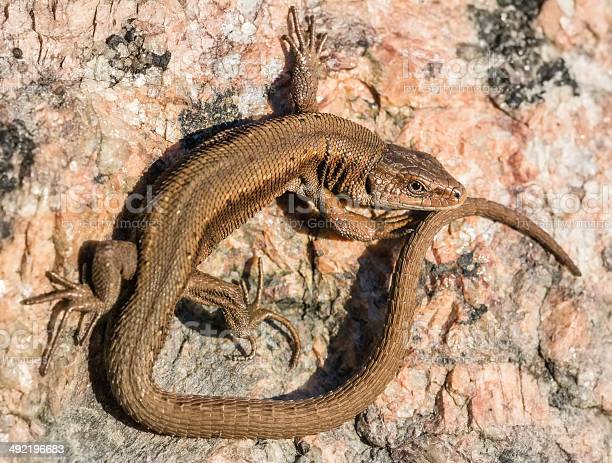A snake-like lizard was spotted in a hotel during a conference, according to photos posted by an Australian snake catcher.
Sean Cade, the founder of snake removal company Australian Snake Catchers, was called to the Crowne Plaza Hotel in Windsor, near Sydney, to trap a red-bellied snake. Red-bellied snakes are one of Australia’s most commonly encountered snakes.
The snake had been caught under a frying pot when the snake catcher arrived. Cade removed the pot to uncover the snake, only to discover that it wasn’t a snake at all, but a common scaly-foot, a legless lizard.
The snake catcher said the “amazing creature” was a “super cool surprise” as he shared images of the catch on Facebook. He says that many people mistake these lizards for snakes.
According to Cade, this lizard was around a foot long altogether, with a similar-sized body and tail. These lizards typically grow to be approximately 9 inches long, but this one is slightly larger than ordinary.
The patrons were able to resume their meeting after the snake catcher had removed the lizard, he said.
Also read: Rare antelope population has doubled since 2019: Kazakhstan
The common scaly-foot lizard is one of Australia’s largest legless lizards. They are harmless to people, but when frightened, they may flick their tongue like a snake.
The scaly-foot lizard can be distinguished from snakes in numerous ways. Snakes have larger bodies and shorter tails than other reptiles. Most lizards have external ears and eyelids, whereas snakes only have a brille, which is a scale linked to each eye.
The common scaly-foot lizard, according to Cade, has flaps on either side of its flank that are ancestral remnants of its legs. The term “scaly foot” is derived from this. Snakes have nearly no appendages on their bodies.
The two species can also be distinguished by the prey they choose. Snakes, for example, pursue huge food such as birds and small mammals, but lizards eat insects, spiders, and fruits, depending on the species.
The majority of limbless lizards live underground and have developed without legs to make it easier to move about.
These lizards are most active at dusk or morning, but they can also be nocturnal in hot weather. Because it is currently summer in Australia, this scaly-footed lizard sighting is extremely rare. It is mostly found in Australia’s southern and eastern regions, while there are a few other populations scattered throughout Queensland.







